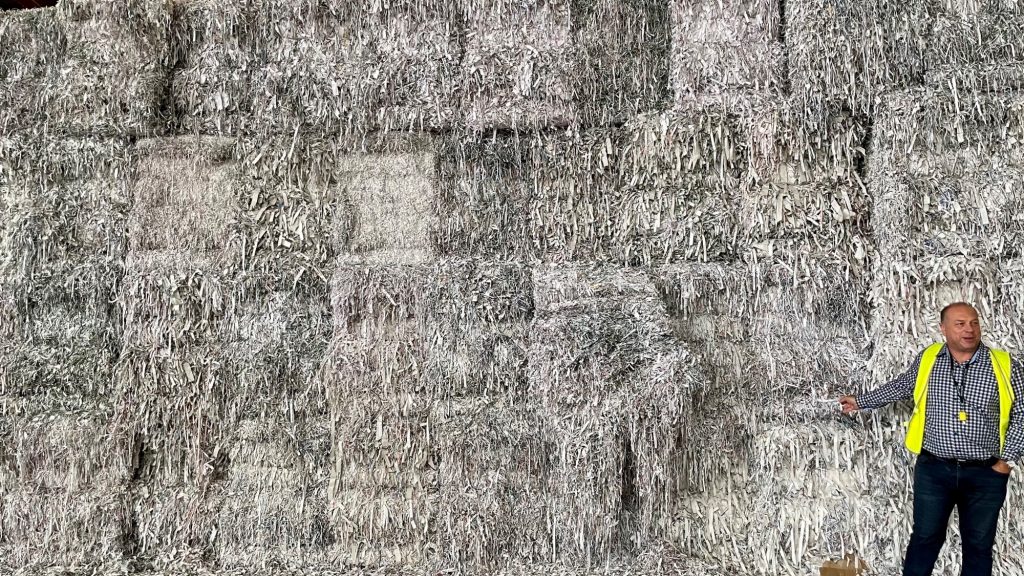HOW WE OPTIMISED OUR WASTE STREAM TO REDUCE OUR IMPACT ON LANDFILL
At CCS Packaging, we have partnered with Paper Resource to recycle better. Last week we visited their plant in Kingsgrove, Sydney, to learn more about what happens to our commercial waste after it leaves the factory.
 Dean from Paper Resource, and Monica from CCS, standing in front of bales of high-quality printer’s offcuts.
Dean from Paper Resource, and Monica from CCS, standing in front of bales of high-quality printer’s offcuts.
For the past six months, we have been using Paper Resource as our recycling provider. We have been extremely happy with them – they have shown us how to recycle items that were previously going into landfill, and are constantly expanding their list of acceptable recyclable materials, which would historically go straight to landfill.
WHAT DOES CCS RECYCLE?
Each week, we sort our waste streams into four different sections.
Paper
Clear Soft Plastics
Cardboard
Mixed Waste
Paper Resource collects these waste streams from our factory in Silverwater and takes them to their processing facilities in Kingsgrove. These materials are shredded and baled at Paper Resource, before being sent off onto the next stage of their journey in the hydro pulping process.
WHAT DOES OUR WASTE BECOME AFTER IT’S BEEN RECYCLED?
Our paper offcuts are sent to paper mills in Australia and overseas, then turned back into new paper products.
Our clear soft plastics are sent to a local recycler. They are then granulated into pellets, used for injection molding for new containers.
Our cardboard box containers are pulped and turned into new cardboard and packaging products.
HOW MUCH WASTE ARE PAPER RESOURCE ABLE TO PROCESS?
At Paper Resource, they can divert 98% of all materials they receive from landfill.
HOW MANY TIMES CAN PAPER BE RECYCLED?
Paper can be recycled 4-6 times. Each time it goes through the recycling process, the fibres are shortened. The life cycle of pulp might start as high-quality white printing paper, and end up as tissues in the last cycle of its life.
HOW DOES THIS COMPARE TO OTHER MATERIALS?
Glass, Aluminium, Steel, and Copper can be recycled an infinite number of times, without degrading in quality.
Plastic can only be recycled 2-3 times before the quality becomes so poor that it cannot be recycled again.
WHAT IS THE RECYCLING LANDSCAPE LIKE IN AUSTRALIA CURRENTLY?
In 2018, China implemented their ‘National Sword’ Program, which banned all but the highest quality materials for recycling. What this means is that 1.25 million tonnes of material we previously sent to China could no longer be processed there.
In late 2020, Australia implemented a ban on the export of unprocessed waste commodities overseas, which will officially kick in by 2021.
Due to this new legislation being implemented, local and federal governments, as well as industry players will be investing 600m into a newly created Recycling Modernisation Fund (RMF).
What this means is that the domestic recycling landscape is rapidly growing capacity in preparation to process our domestic recyclables right here in Australia.
It’s an exciting time for the recycling industry in Australia, and we expect to see lots of domestic growth and innovation in this area.
You can check out the fantastic work Paper Resource does here.
